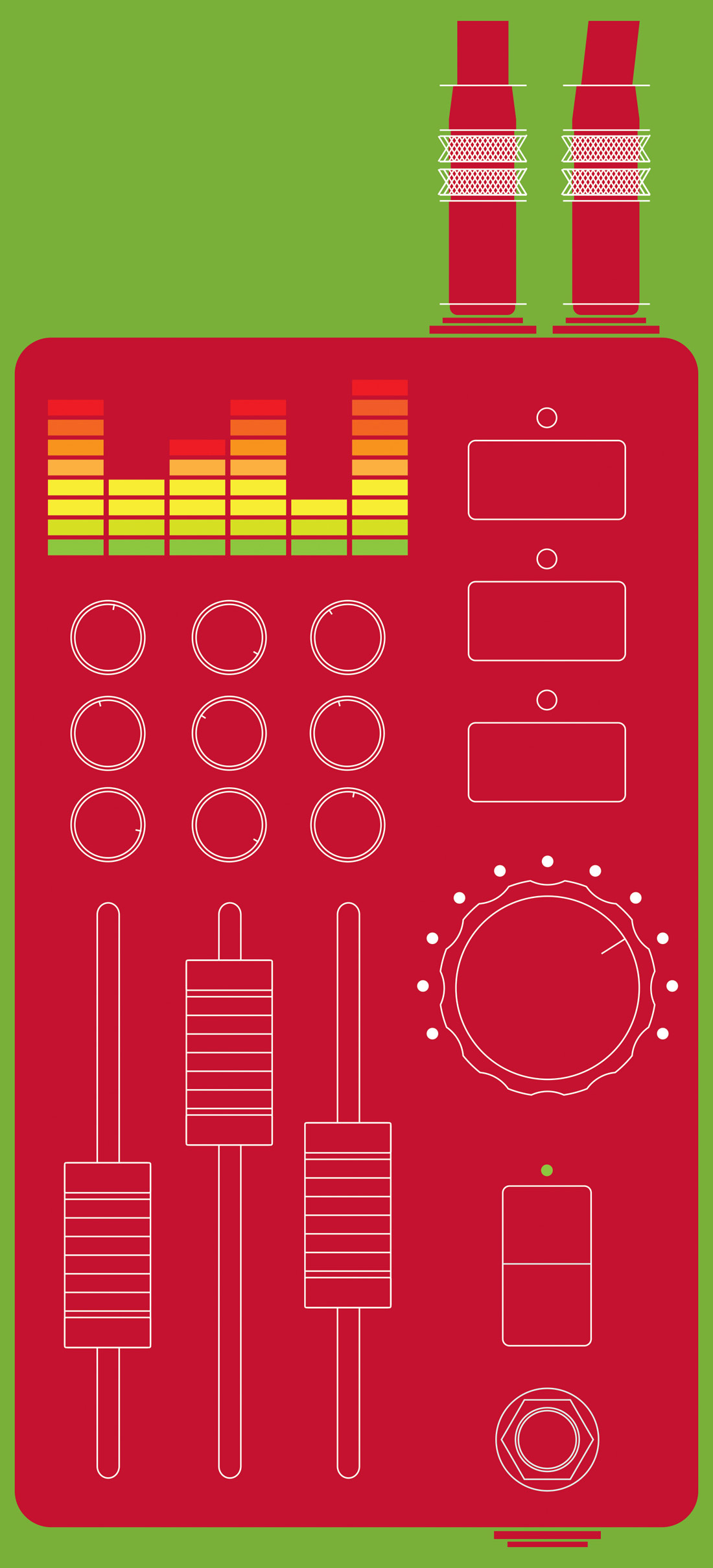Brian Horvitz is the proprietor of Boston area-based TB Audio. Brian produces DIY-inspired analog gear, some as kits and some ready to go. His TBDD is a "modern implementation" of Roland's classic Dimension D rackmount chorus, crammed into a dual-width 500-series module. Wow! That's a fairly insane undertaking, and the TBDD's guts bear that out — two identical, very dense boards, beautifully assembled. The circuit uses NOS (New Old Stock) analog bucket-brigade delay chips — the same ones found in the original Roland units — but according to Brian, he designed the rest of the circuit to be quieter than the original and, of course, to run within the power requirements of the 500- series spec. The TBDD was originally available both assembled and as a kit, but the kit was a 20-hour build, so now it's only available as an assembled product.
The TBDD's front panel is clean and simple. A five-button switch bank is a worthy tribute to the Dimension D buttons for Modes 1-4 and Off (which, on the TBDD, can be set for true bypass or not, via an internal jumper). Other controls include a mono/stereo input switch, a blend knob, and a ten-segment LED meter.
So how's it sound? Lovely. Like the Dimension D, the TBDD is wide and interesting, but subtle compared to a lot of chorus effects. It's a nice way to push an element — like a backing vocal, a reverb return, or a rhythm guitar — back in the mix while leaving it audible. You can also use the TBDD to "stereo-ize" a mono track. The result is mono compatible, though depending on the mode, you'll lose some or a lot of the chorus effect when summing to mono. I loved the TBDD on bass for that '80s goth thing. Mostly, I preferred it on clean sources — chorused distortion is pretty nasty — but in one mix, it did great stuff to a semi-crunchy staccato rhythm guitar.
I compared the TBDD to Universal Audio's Dimension D plug-in by recording a number of sources through identical settings on each chorus. The results were remarkably similar. On bass and drums, the TBDD seemed a little richer (maybe I hit its input hard enough to create some mild distortion), and on female vocals and acoustic guitar, the UAD plug-in had a bit more "air." But honestly, it was a very close contest, and I'd feel good about using either. Of course, you can track through the TBDD with zero latency! And the TBDD's blend knob is a great feature, both for tracking and mixing. I found myself doing lots of partial blends to get subtle shimmer.
I emailed Brian a few times during this review, and he was fantastic. He replied quickly with detailed, clear, technical answers.
Obviously the TBDD isn't for everyone. It's not cheap, and you only get one "instance." If you work entirely in the box, it probably shouldn't be your first analog purchase. But if you do a lot of analog mixing, or you'd like a really nice line- level chorus, or you like using gear that nobody else has, or maybe you like gear that only an obsessed individual would design and build, check it out. Compared to a vintage Dimension D on eBay, the TBDD is a few hundred bucks more, but it's also much smaller, and it comes with 35 fewer years of wear and tear.




_disp_horizontal_bw.jpg)